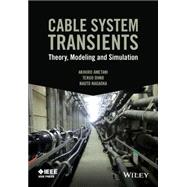- Presents a systematic and comprehensive introduction to electromagnetic transient in cable systems
- Written by the internationally renowned pioneer in the field
- Thorough coverage of the state of the art on the topic, presented in a well-organized, logical style, from fundamentals and practical applications
- A companion website is available








